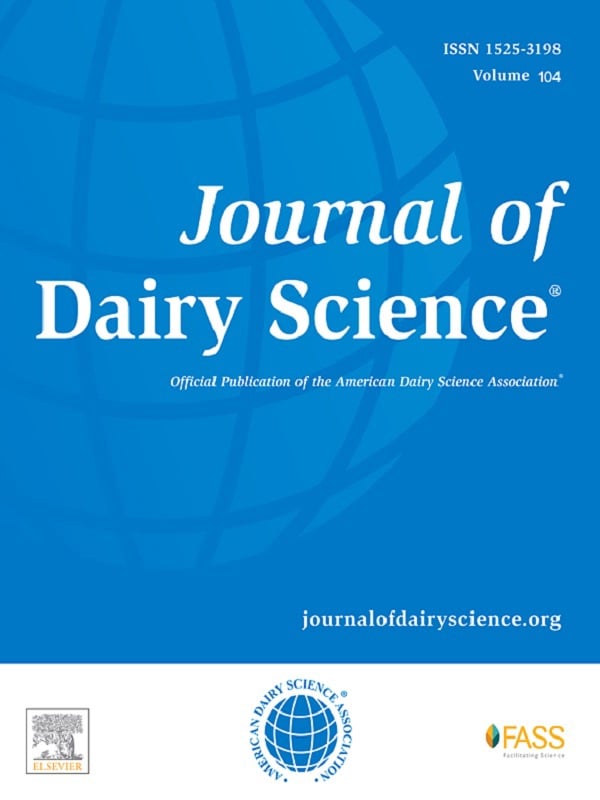Dietary protein oscillation: Effects on feed intake, lactation performance, and milk nitrogen efficiency in lactating dairy cows
J. Dairy Sci. 104 https://doi.org/10.3168/jds.2021-20219
- Ruminants
- Open Access
- Dairy
J. B. Daniel, J. Dijkstra, J. Martín-Tereso

ABSTRACT
Limited research with growing ruminants indicates that oscillating (OS) dietary crude protein (CP) concentration may improve nitrogen use efficiency (NUE). Our aim was to determine if a total mixed ration (TMR) based on OS CP (48-h phases of 13.4% and 16.5% CP, respectively) would increase NUE of lactating dairy cows compared with a static CP TMR (ST; 14.9% CP). The experiment was a randomized complete block design with 50 cows [150 ± 61 (mean ± SD) d in milk]. Cows were blocked by parity, days in milk, and milk protein yield. On average, diets were equal in composition over the total experiment. Cows were milked twice daily, and 8 milk samples were collected in each 4-d period. Each 48 h of low-CP (LP) and high-CP (HP) TMR offered to OS cows corresponded to milk collected at milkings 1 to 4 and 5 to 8, respectively. Dry matter intake (mean = 25.5 kg/d for both treatment groups); yields of milk (mean = 31.5 kg/d for both treatment groups), protein, fat, lactose, and fat- and protein-corrected milk (mean = 33.6 kg/d for both treatment groups); and milk concentration of protein, fat, and lactose did not differ between treatments. However, milk urea concentration was higher for OS compared with ST (12.2 vs. 11.3 mg/dL). Body weight, body condition score, NUE, and feed efficiency were unaffected by OS. Apparent total-tract digestibility of dry matter (695 vs. 677 g/kg), organic matter (714 vs. 697 g/kg), CP (624 vs. 594 g/kg), neutral detergent fiber (530 vs. 499 g/kg), and starch (976 vs. 973 g/kg) were higher for OS than for ST cows. Cows in OS responded transiently, and regression analysis of differences within block over time revealed changes in yield of milk (−531 g/d), milk protein (−25.6 g/d), and milk lactose (−16.7 g/d) in LP. Opposite effects were observed for yield of milk (+612 g/d), milk protein (+28.8 g/d), and milk lactose (+28.0 g/d) during HP. Changes in concentrations of milk protein (−0.050%/d), lactose (+0.030%/d), and urea (−3.0 mg/dL per day) during LP, and in milk lactose (−0.024%/d) and urea (+4.3 mg/dL per day) during HP, were observed. Milk yield, lactose yield, and protein yield were lower for OS than ST cows at the last milking of LP and at the first milking of HP. Milk urea concentration did not show such a lag and was lower in the last 2 milkings of LP, and higher in the last 3 milkings of HP, in OS compared with ST cows. Overall, performance and NUE were unaffected by OS treatment, but apparent total-tract digestibility and milk urea concentration increased, and transient effects on milk yield and composition occurred in OS cows.